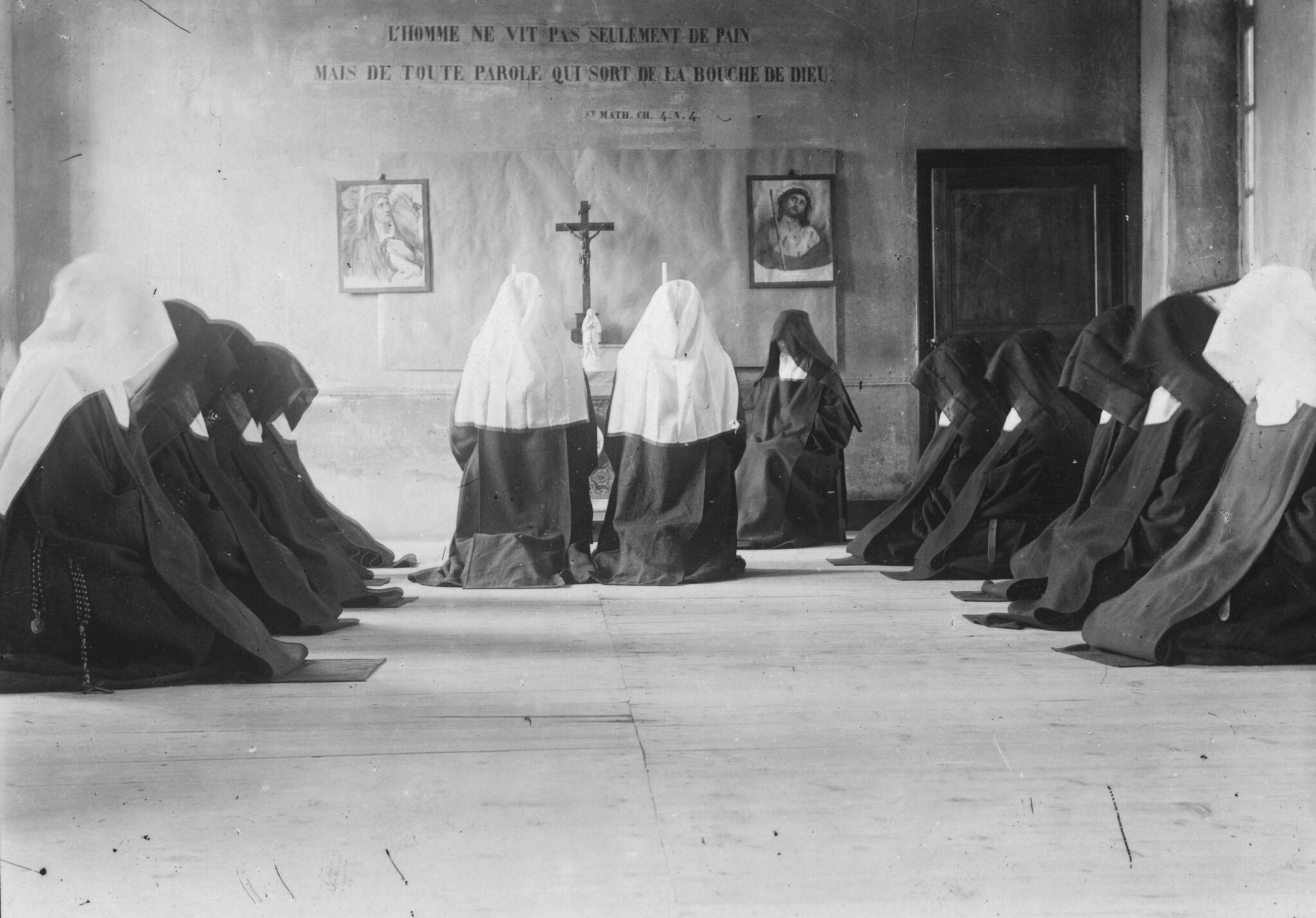Cloistered
Catherine Coldstream
Chatto & Windus, £20, 352 pages
Charlotte Brontë’s classic <em>bildungs-roman, Jane Eyre</em>, tells the story of a young girl moving from a cruel adolescence to a cruel adulthood before finally settling into marriage with the man she had once rejected because God and her conscience had called her away. For years, Jane grieves deeply.
Whilst reading Catherine Coldstream’s contemplative memoir, Cloistered, I often found myself recalling the spiritual structure of Bronte’s novel as a way of understanding why it is a woman in her late 20s might commit 12 years of her life to the self-negating rules of a Carmelite nunnery.
Cloistered might be read in the tradition of coming-of-age stories that deal with grief and the pull of the irresistible divine. And so, as Brontë’s romantic heroine Jane is radically open to a life of loving dedication, so Sister Catherine yearns to dedicate herself to truth after her father’s death.
At Akenside Priory, as the rural Northumbrian setting is known to us – all names have been changed – Coldstream turns herself over to a life built upon “the sound of perfect silence”, a mode of pure being we can only dream of in our noise-ridden world.
As the prophet Elijah hears “the still small voice” of the Lord on Mount Horeb after the roar of wind, earthquake and fire, Sister Catherine is called into a sacred silence that heals and nourishes her after the storm of grief that once tore her world apart.
Silence – with its deep internal landscapes, its summoning of spiritual presence, its slow passing of time “like plainchant, slow, pulled long and taut to its limits” – provides Coldstream with a new kind of home. Akenside replaces the family home battered by the death of her beloved father, William Coldstream, painter and Professor of Fine Art at UCL, and the dramatic displays of absence performed by her beautiful but temperamental mother.
By contrast, the Priory provides a surety and firmness; a rigorous spiritual practice organised like a Book of Hours around space and time. Cloistered is a paean to the secure architecture that held the author for so many formative years; a breviary organised around a set of spaces denoting the passing of time that we call daily life, which begins with the sacred unit of the nun’s cell.
This is a serious book: a theological study of Christian hermitage but also a story of spiritual survival and fortitude. It tells of a young woman in search of knowledge and understanding of the afterlife where “afterlife” means the aftermath of grief as well as the language and experience of transcendence.
While Jane Eyre had her strange drawings of moonlit forests and meadows, Catherine has the language and ritual of prayer; both sought out knowledge in forms of contemplative reading. Both are drawn to the language of spiritual intervention or ghostly presences, which in Christian language is the Holy Spirit calling out to his young disciple through the silence of the dark night of the soul.
Scholarly reading informs the young nun’s journey towards transcendence, as we are led through the tradition of the Christian hermit. Elijah is one example, and the ascetics of the Alexandrian desert, the followers of St Anth-ony of Egypt, are others. Filled with the gift of Christian grace or charism, the Carmelite nuns lived by rules associated with the 16th century; those which St Teresa of Ávila and the earlier model established on Mount Carmel in the 12th century, a sort of desert charism or holy calling to self-abnegation.
Unsurprisingly, there is a darker side to this life of spiritual discipline. Cloistered also leads
us through what CP Snow called, in political terms, “corridors of power” towards the will of the Mother Superior. The atmosphere surrounding “Mother Elizabeth” is oppressive and claustrophobic. And so, after a time of crisis in
the community, at the age of 39, Catherine surrenders her strict vows and rejoins the world.
Her intellectual and spiritual probing have proved too challenging in a closed community where human whim often undermines the purity of the spiritual mission. Cloistered is also a truthful account of human relations once they drift away from the world. As a reader we long for the beauty of the natural world found in the priory grounds – and here the writing is exquisite – where Sister Catherine finds God among the apple trees and in the rhythms of the seasons; hints of a life beyond the cloisters.
<em>Sally Bayley teaches English at Hertford College, Oxford.</em>
<strong><strong>This article originally appeared in the May 2024 issue of the <em>Catholic Herald</em>. To subscribe to our award-winning, thought-provoking magazine and have independent and high-calibre counter-cultural Catholic journalism delivered to your door anywhere in the world click</strong> <mark style="background-color:rgba(0, 0, 0, 0)" class="has-inline-color has-vivid-cyan-blue-color"><a href="https://catholicherald.co.uk/subscribe/?swcfpc=1">h</a></mark><a href="https://catholicherald.co.uk/subscribe/?swcfpc=1"><mark style="background-color:rgba(0, 0, 0, 0)" class="has-inline-color has-vivid-cyan-blue-color">ere</mark></a>.</strong>



